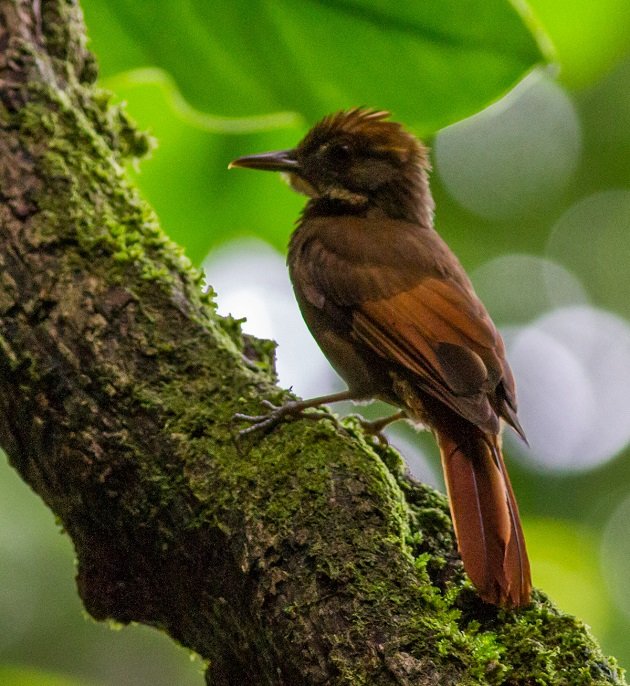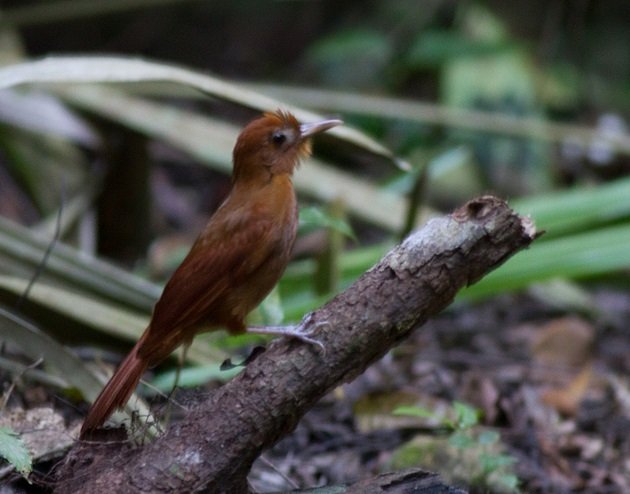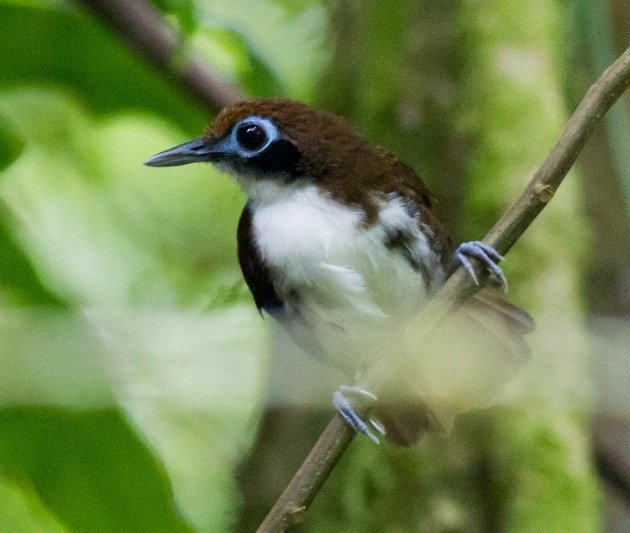
Kathi Borgmann and Josh Beck are living the dream of many a North American birder. They packed up in June of 2013 and headed south from San Diego with the southern tip of South America as their destination. Like so many trips this one is more about the journey than the destination which brings us to why they have had a series of guest posts on 10,000 Birds. En route they will be “birding in nearly every country in mainland North and South America,” and, as they say on their excellent blog, “Our journey is about collecting valuable data on bird species, their status and distribution, current conservation issues, and more along the way. We hope that our journey will provide important information about many Neotropical bird species as well as inform conservation.”
We think that they have been successful so far and are really enjoying their posts here. Want to check them out? Their first contribution to 10,000 Birds is here. Their second is here. Their third is here. Check ’em out and come back to read about ants!
Temporarily Kathi and Josh are back in the United States resting, refueling, and planning the South American portion of their journey. Here’s hoping that while they’re back they’ll write some more posts for 10,000 Birds!
All photographs in this post are copyright Josh Beck.
Ants! For most people, the word ants is usually said in disgust. Ants always seem to be everywhere you do not want them – in your kitchen, in your cupboards, and in your food. Most of the time you just want to get rid of them, but if you are a birder in the tropics ants are what you are looking for and you love ants. Not just any old ant though, you are on the lookout for army ants. The dominate army ant species in the neotropics is Eciton burchelli, a diurnal swarm-raiding ant. Army ants, unlike other ants, do not have a stationary colony. Instead, their bivouac, as it is called, which holds the queen, moves around in search of prey. Swarms of army ants move across the forest floor in fast fluid waves quickly devouring everything in their path.
This video by Kathi Borgmann shows an army ant swarm in Mexico.
Finding an army ant swarm is like hitting a gold mine though, because with army ants comes birds and many of them. Birds follow army ant swarms not to eat the ants but rather to eat the insects that jump and scurry out of the way to avoid being devoured by the army of ants and hence are easy picking for birds. Many ant-following birds perch sideways on vertical stems just in front of or above the army ants – the perfect position to snap at the fleeing insects. More than one-hundred different species associate with army ant swarms to some extent.
Bicolored Antbird
Some species such as the Ocellated and Bicolored Antbirds are obligate army ant followers and they rely on army ants almost exclusively to find food. Sixteen species within the antbird family (Thamnophidae) are considered true obligate army ant followers. Other birds are considered regular or opportunistic followers of army ants such as members of the woodcreeper (Dendrocolaptinae), ovenbird (Furnariidae), and tanager (Thraupidae) families. These birds take advantage of army ant swarms that passes through their territory for easy pickings. However, many other species often join the flocks of birds foraging ahead of the army ants swarms to take advantage of safe foraging opportunities in the flock. With so many different species joining army ant flocks, finding an army ant swarm can be a tropical birding bonanza!
Ocellated Antbird
Army ant swarms are truly fascinating to watch. Sometimes I am not sure what is more interesting to watch, the ant swarm devouring everything in their path or watching birds pick off the insects that are fleeing ahead of the swarm. Either way, it is something to behold. How do you find an ant swarm? Well, frequently you know you’ve found an ant swarm when someone in your party starts jumping around, madly swatting their legs, and perhaps uttering a few words not fit for print. If you are lucky, you will find an ant swarm before they find you, which is a preferable method for sure. A bite from an army ant can really pack a punch; I speak from experience. Besides waiting for the army ants to find you, if you notice a group of birds rapidly foraging and chattering, look around and check your feet because there could be an army ant swarm nearby.
Perhaps the best way to find an army ant swarm is to listen for the calls of birds that usually associate with ants. Their calls can be a good indication to look around and see if there are ants and other birds with them. Sometimes you can even see the army ants moving through the forest with a quick scan of your binoculars. When you find an army ant swarm, let the fun begin. Being quiet and patient and letting the birds move around and reveal themselves is usually the best strategy. Try to stay with the flock as long as possible because you never know who may turn up.
We have seen some fantastic ant swarms in the tropics. One of our best was in the lowlands of Chiapas, Mexico. We had at least fifteen species foraging around the army ant swarm in a mad dash to gobble up the fleeing insects. Being in the middle of army ant swarm is kind of like being in the middle of a fall out of migratory birds in the north: you can’t keep up with the birds streaming through your binoculars. It is quite a rush as birds flit frantically to and fro. As well as the obvious antbirds and tanagers, an army ant swarm can be your ticket to seeing some great birds due to the wide number of species that might join the foraging flock.
The army ant swarm that we watched in Chiapas quickly brought us great views of Red-throated Ant-Tanager, Plain Ant-Vireo, and Buff-throated Foliage-Gleaner, but with a little more patience we also picked a Gray-throated Chat out of the flock. Although Gray-throated Chats are not typically ant followers they were with the flock to take advantage of a safe foraging opportunity and easy to find food.
Tawny-winged Woodcreeper
We also had a great ant swarm in Tikal in Guatemala where in one binocular view we saw Ruddy Woodcreeper, Tawny-winged Woodcreeper, and Northern-barred Woodcreeper. While none of these species are particularily rare, seeing not just one of them, but all three in one binocular view was a pretty slick hat-trick!
Ruddy Woodcreeper
In the Children’s Eternal Rainforest in Costa Rica, we came across another great ant swarm that produced the more regular army ant followers such as Bicolored Antbird, Ocellated Antbird, Zeledon’s Antbird, Black-headed Antthrush, and more opportunistic flock followers. We stayed with that flock for 30 minutes or more which paid off with great views of Sooty-faced Finch, Spotted Barbtail, and Scaly-throated Foliage-Gleaner. Finding an ant swarm really is like a tropical birding gold mine and the birding can be incredible, but don’t forget to look down from time to time and watch where you stand!
Bicolored Antbird
…


















Leave a Comment